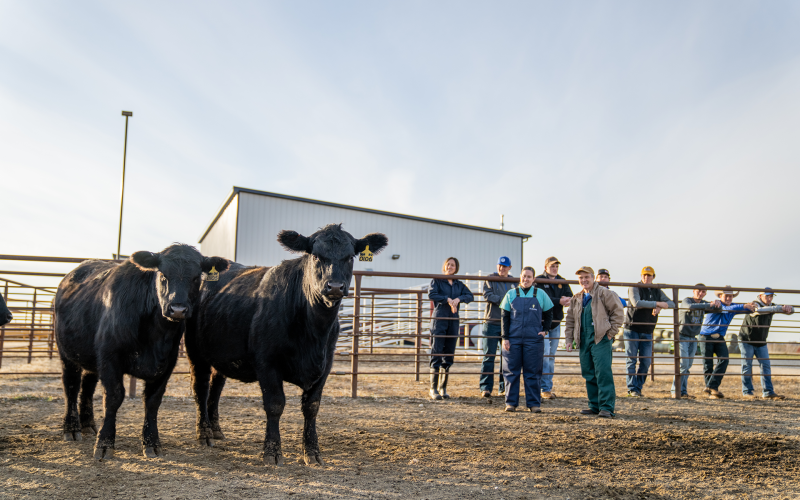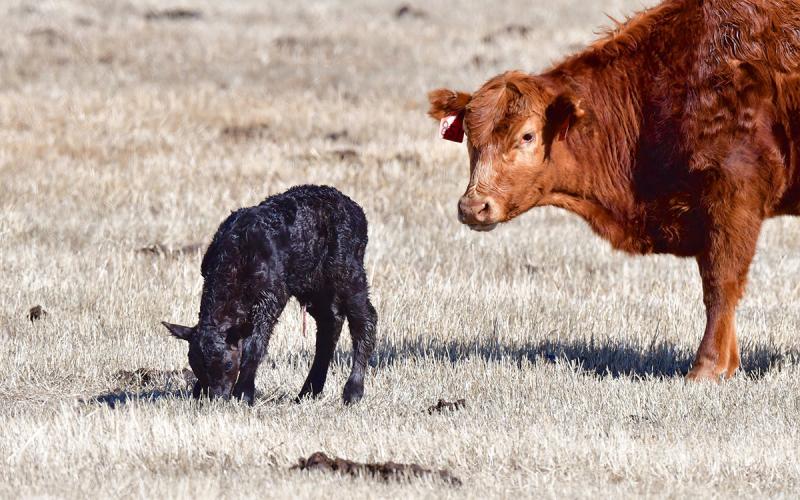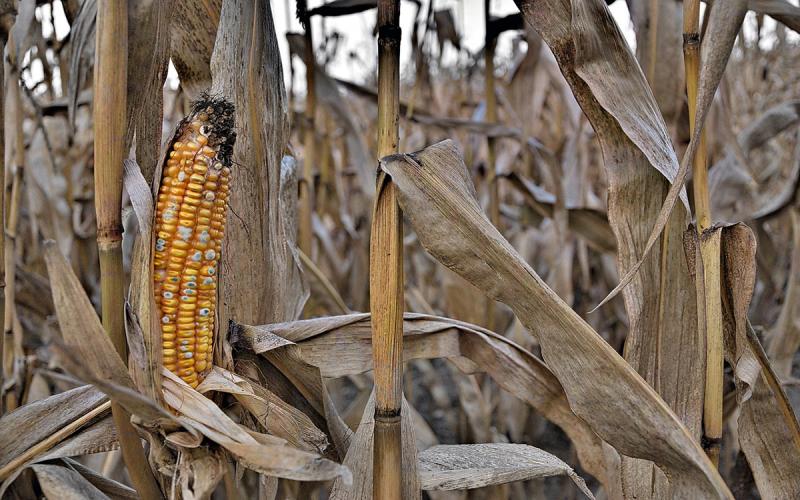Written by Joe Darrington (former SDSU Extension Livestock Environment Associate).
Appropriate environments for calving barns are critical to give calves the best start when being born in cold weather. Calves require a dry, clean environment, with lots of fresh air and protection from the wind. A dry and clean environment is critical to avoid transmission of both scours and respiratory disease organisms, and this is primarily accomplished by providing clean bedding and proper ventilation. Young calves can do very well at low temperatures provided they are dry, out of the wind, and have adequate nutrition (make sure mom is producing milk and that the calf can suckle appropriately). Ventilation system sizing is specific to each farm and is important to manage indoor air quality and to reduce moisture build up. The rest of this article will give you a starting point to meet your calving barn ventilation requirements.
Determining Ventilation Needs
When determining the ventilation required in a calving facility it is important to first define the total numbers of both cows and calves that will be in the building at any given time. For example, let’s examine a herd of 200 pregnant cows that will calve starting February 1st. A safe general recommendation for cold weather calving buildings is to have enough capacity for 15-20% of the cowherd (MWPS-6), which for our example comes to 30-40 pairs. Using the upper general recommendation of 40 pairs, the following table prescribes a minimum ventilation rate of 2040 cfm (ft3/min). The rate of 2040 cfm is the minimum amount of air movement required to maintain appropriate indoor air quality when the building is at capacity. If mechanical ventilation is used, a staged system could be utilized to provide several stages. For example, a two-stage system could reduce the ventilation to 1020 cfm when at half capacity, as well as providing for full capacity needs.
| Number of cow-calf pairs | Calves (15 cfm/hd) |
Cows (36 cfm/hd) |
Total CFM |
| 10 | 150 | 360 | 510 |
| 20 | 300 | 720 |
1020 |
| 30 | 450 | 1080 | 1530 |
| 40 | 600 | 1440 | 2040 |
| 50 | 750 | 1800 | 2550 |
| 75 | 1125 | 2700 | 3825 |
| 100 | 1500 | 3600 | 5100 |
In a mechanical system air inlet design goes hand in hand with fan selection. Careful selection and design of air inlets ensure adequate air mixing and contaminant removal. Additionally, proper planning of air inlets and outlets will help prevent the occurrence of drafts.
If utilizing natural ventilation to maintain indoor air quality it is important to make sure that you have a continuous ridge vent with 2” of opening for every 10’ of building width. For example a 40’ wide building would require 8” of open ridge at a minimum. In addition to an open ridge, continuous eave openings are required and must be at least 1” of opening for every 10’ of building width on both sidewalls.
Temperature
Temperatures in these buildings, without any supplemental heat, will rise above outdoor temperatures by approximately 3-10 °F depending on the level of insulation in the building. Providing supplemental heat in the building is rarely necessary from a production standpoint. However supplemental heat is frequently necessary to protect waterers and improve worker comfort when temperatures drop below freezing. A calf warming box to help dry out newborn calves or to warm a chilled calf is also a great tool for use in winter calving systems.
Other Considerations
Once calves have been born, dried off, consumed an adequate amount of colostrum (~4 quarts within first 24 hours, the earlier the better!), and are suckling reliably, they can be let outside with their mothers. Important things to remember are to limit exposure to wind, to provide areas of deep bedding that help insulate calves from the ground, and to monitor your calves closely if wet/cold conditions develop. If you have any questions relating to options that you are considering on your operation please contact Joe Darrington (former SDSU Extension Livestock Environment Associate).
Reference:
MWPS-6: Beef Housing and Equipment Handbook, 4th Edition, 1987


